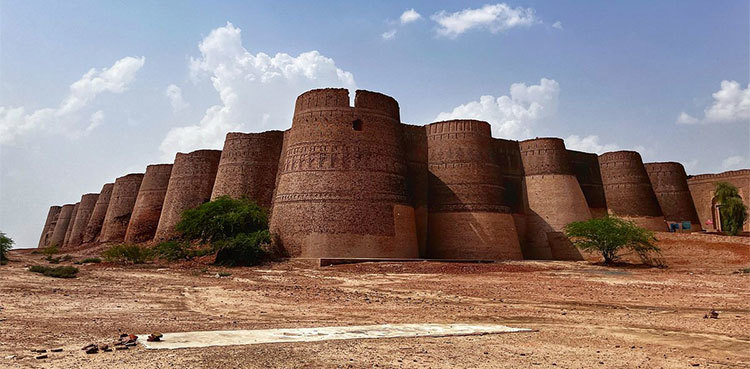Travel Diary: Derawar Fort Bahawalpur
- By Dua Shah -
- Dec 29, 2023

Part of a string of desert citadels, Cholistan Fort, also known as the Derawar Fort, remained the desert abode of Daudputra ruling house of Bahawalpur for forty years.
It is one of its kind in the vast desert swamped areas of Southern Punjab that still retains its majesty. With its landmark architecture symbolizing centuries of grandeur, the Fort is a standout attraction in the Cholistan desert.
The Derawar Fort was first built in the 9th century under the kingship of Rai Jajja Bhati, however, it was the Nawab of Bahawalpur, Sadeq Mohammad Khan I who captured the fort in 1733 and had it rebuilt to how it looks today.
It is the culmination of the Mughal style of architecture which began with the first Mughal emperor and that involves a fusion of Persian, Timurid and Hindu traditions.
The fort was taken away from the Nawab in 1747 but in 1804, Nawab Mubarak Khan reclaimed the fort. Later, the British invaded the region and took control of the fort. There are
several archaeological sites that surround the Fort and some date back to the time of the Indus Valley Civilisation.
Interestingly, these sites have not been excavated as yet due to legal and official disputes.
The size of the fort is massive and it is a visually stunning square structure built of clay
bricks. The walls have a length of 1,500 meters and stand up to thirty meters high.
There are forty circular bastions, ten on each side, which stand 30m high and are visible across the desert for many miles. Each is decorated with intricate patterns in cut brick work.
There are remains of structures inside the fort, many richly decorated with tile and fresco work. The Moti or Pearl Mosque stands nearby and also the traditional cemetery of the Nawabs of Bahawalpur filled with ornate and elaborate graves.
Despite its awe-inspiring allure, however, it seems on the verge of collapse due to the neglect of authorities.
